This camera combines the compactness of a folding camera with the quality and handling of a twin-lens reflex camera. The Zeh Zeca-Flex is just the camera mentioned above, and I’ve had my eye on it for many years. However, the rareness and price have always eluded me until I went into a great used camera store in Salt Lake City, UT, Acme Camera.
The first time I went into Acme Camera, they were in their older location, and the store was filled with photo knickknacks. I struck up a conversation with the people there who were selling used gear, servicing cameras, and renting for the local photo community. On my second visit, back in one of the cases was the Zeca-Flex I currently have. The camera was in excellent condition, with clean optics and a working shutter. I offered a trade for the camera, and they accepted. I was elated to have the camera so I could do a blog article on my Zeca-Flex.
History
In the early 1900s, around 1901-1902, Paul Zeh produced camera parts like shutters in his workshop in Dresden for some of the other local camera companies in Germany. In 1913, he started producing cameras, and by 1922, the company Paul Zeh Kamerawerk was started. In the early years, the company mainly produced folding plate cameras or cameras that took images on glass plates, which was very common at that time period.
During the 1920s, the company did very well. At this time in photo history, roll film was starting to become more popular. The photographer or photo enthusiast didn’t need to carry bulky film holders. All the photographer needed to do was put in a roll of film and get 8, 10, 12, or 16 different photos on the same roll of film without the hassle or inconvenience of loading and carrying the film holders.

During the late 1920s and 1930s, the company expanded production into folding roll film cameras. These cameras were more compact and allowed the photographer to travel with less equipment, so their popularity grew.
By 1937, Zeh produced the Zeca-Flex, a folding, twin-lens reflex camera. It has a very similar design to the Welta Perfekta, which was produced in the 1933-34 timeframe, and the more robust Super Perfekta introduced in 1935. The Perfekta and Super Perfekta were made by Welta Kamera Werk, which was in Freital, a very close town to Dresden.
The Pilot Reflex camera, produced in 1931 by Kamera-Werkstätten Guthe & Thorsch in Dresden, has a very similar style and appearance to the Perfekta and the Super Perfekta; you can see a review of the Pilot here.
I’m confident Zeh wanted to compete with Welta on this camera style. Unfortunately, this camera style didn’t catch on with consumers. Hence, with all three cameras, the Perfekta, Super Perfekta, and Zeca-Flex were the only cameras made and are rare and somewhat expensive.
WWII took a toll on Dresden as the Allies leveled the city due to its large manufacturing capabilities. By 1948, the Zeh plant closed, and the company went out of business. My guess is that some of the Russian companies took some of the camera manufacturing machines to produce some of the after-war cameras. This is just my guess, though.
My Camera
The condition of my Zeca-Flex is unusually excellent for a camera that is almost 90 years old. The metal is still shiny, and all the functions move like they did when the camera was first purchased in the late 1930s. The camera measures 7.5″ long without the light hood open. When the light hood is open, it measures 9.25″ tall. The Zeca-Flex is 3.75″ wide and closed; it’s 2.5″ from the front of the viewing lens to the rear of the camera. When the camera is open, it measures 4.75″. The Zeca-Flex weighs 2lb—5.2 oz.
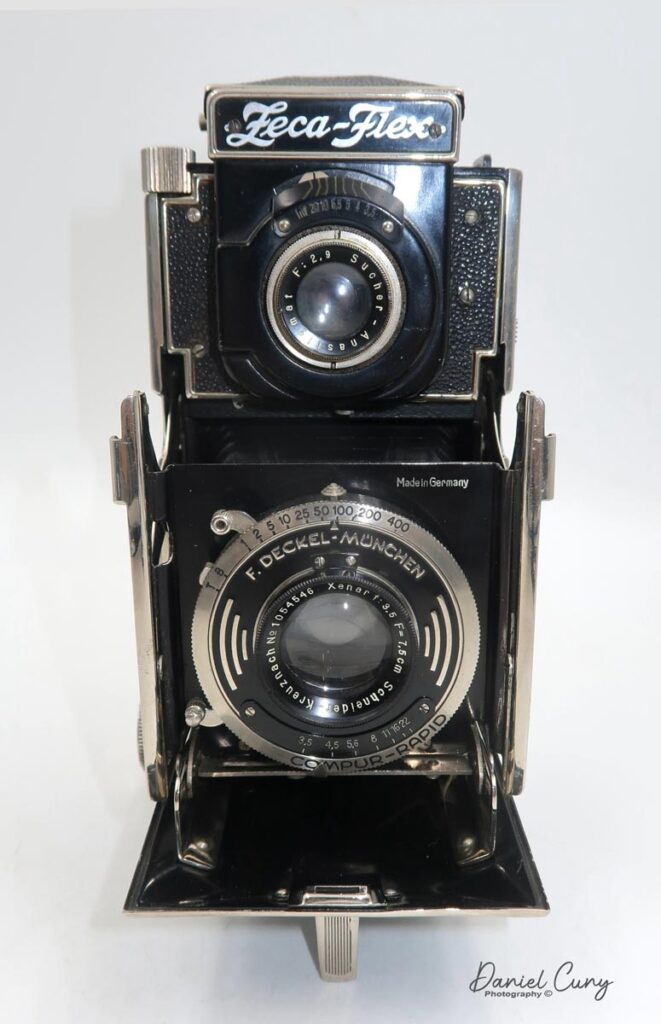
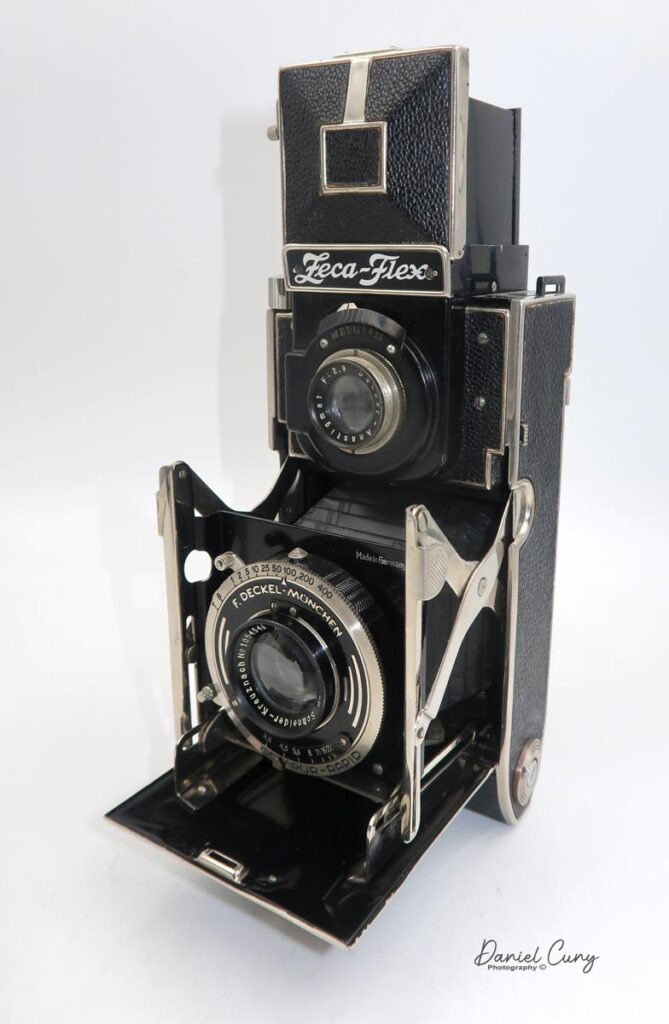
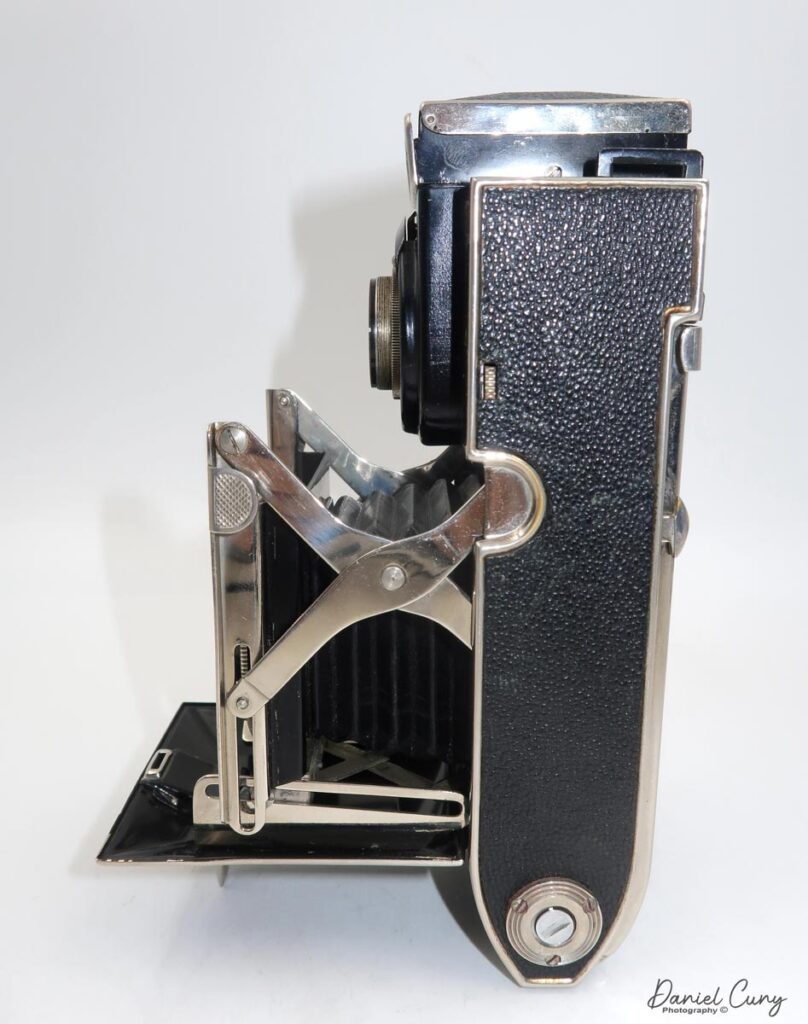
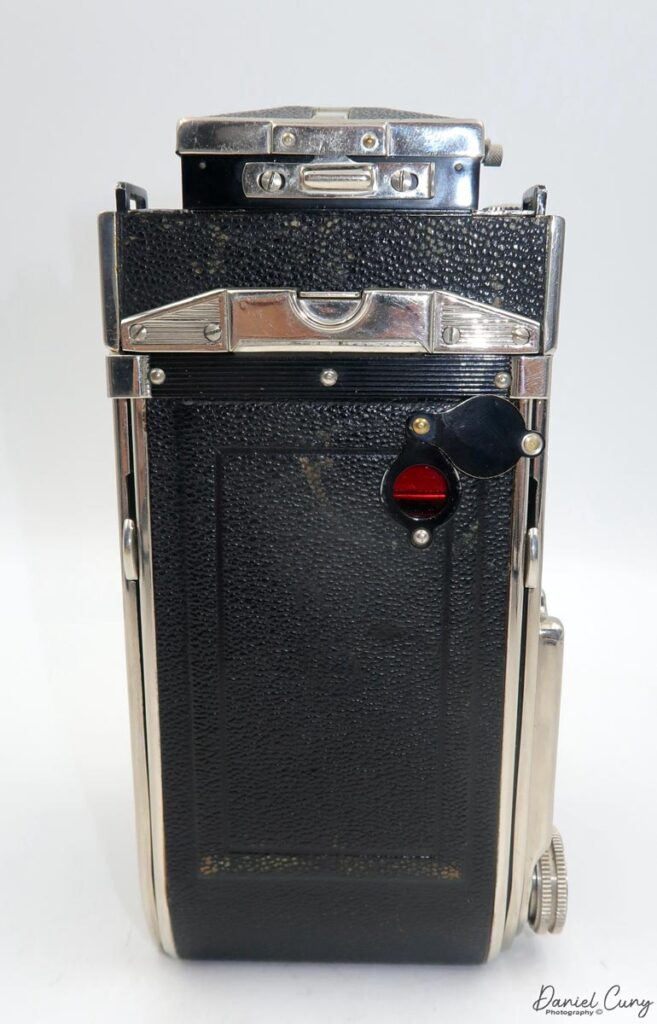
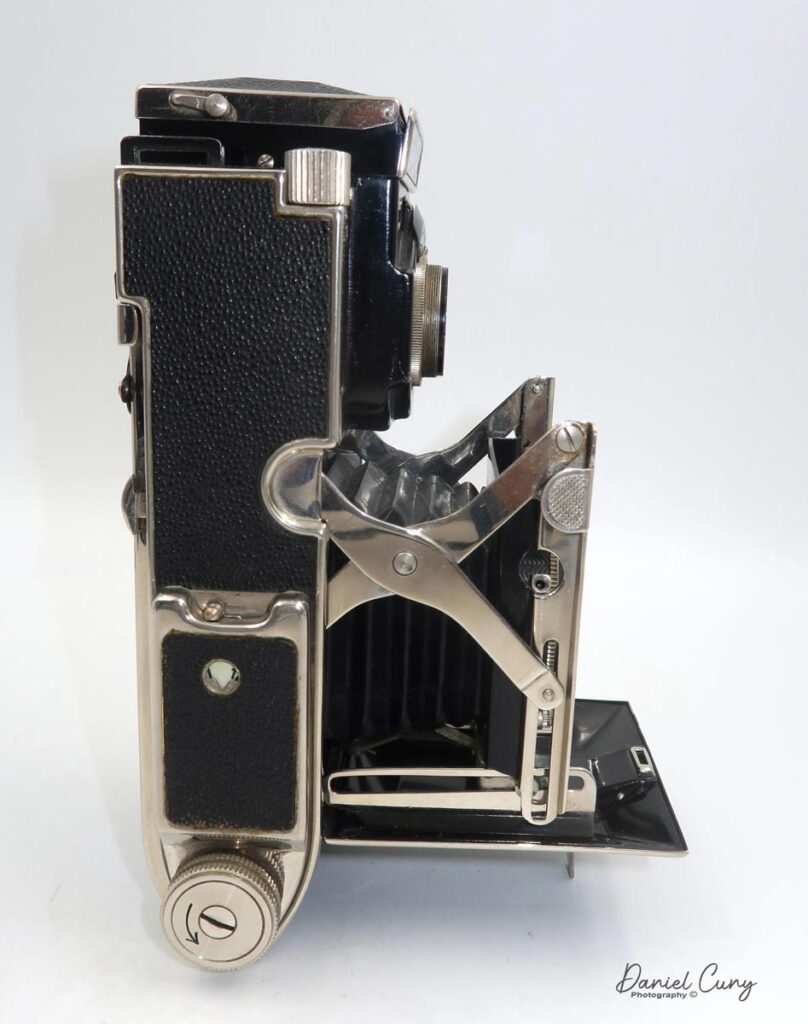
The lens on my Zeca-Flex is a Schneider Xenar 7.5cm (75mm) f 3.5 in an F. Deckel Compur Rapid shutter. The shutter speeds go from 1/400 to 1 sec with both “T” and “B” settings. Since I don’t have a proper shutter tester, all the shutter speeds sound accurate to my trained ear. The viewing lens is a Sucher Anistigmat f2.9 lens.
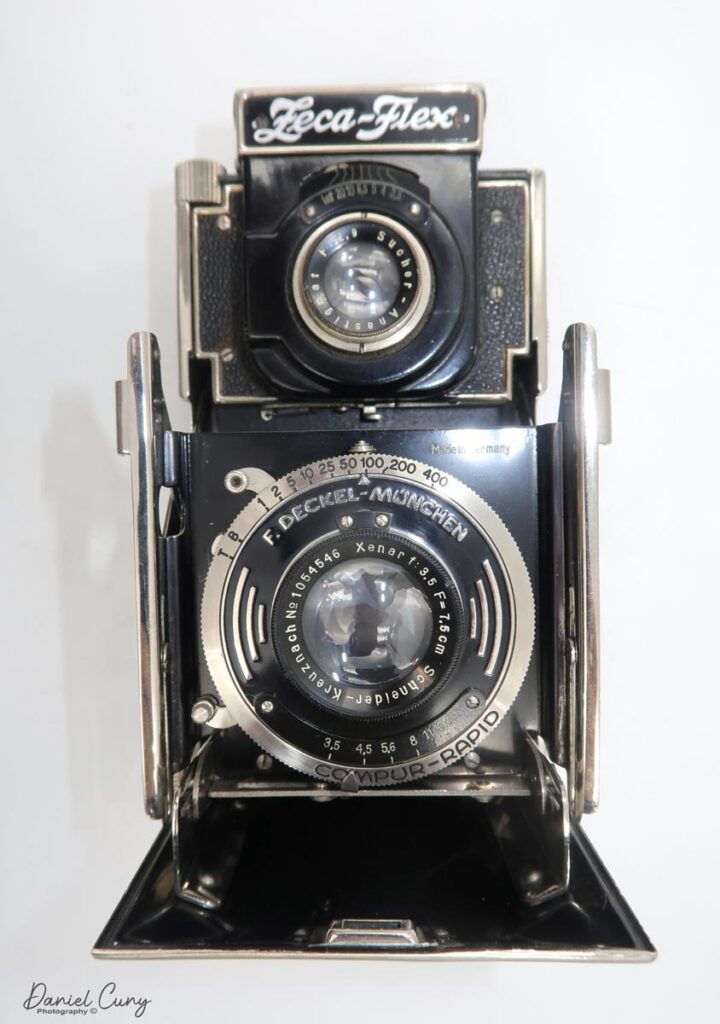
To open the camera, there is a small button on the left side as you hold it to take a photo. Press that small button in, and the lens door unlocks. On my camera, you need to pull out the lens to put it into the taking position. There are knurled grips on the sides of the lens door to pull the lens out. Also on the lens door is a flip-out stand that allows you to stand the camera up, which is very common in folding cameras.
To close the lens, there are two buttons on either side of the backdoor. You press in towards the camera body, then slide the lens back into it and close it until you hear the locking “click” sound, which means the lens is back and locked in the camera body.

On the back of the light hood, there is a sliding bar you slide over to open the light hood for viewing purposes, and on the side of the light hood is a switch you can flip up or down the magnifying glass for critical focusing.
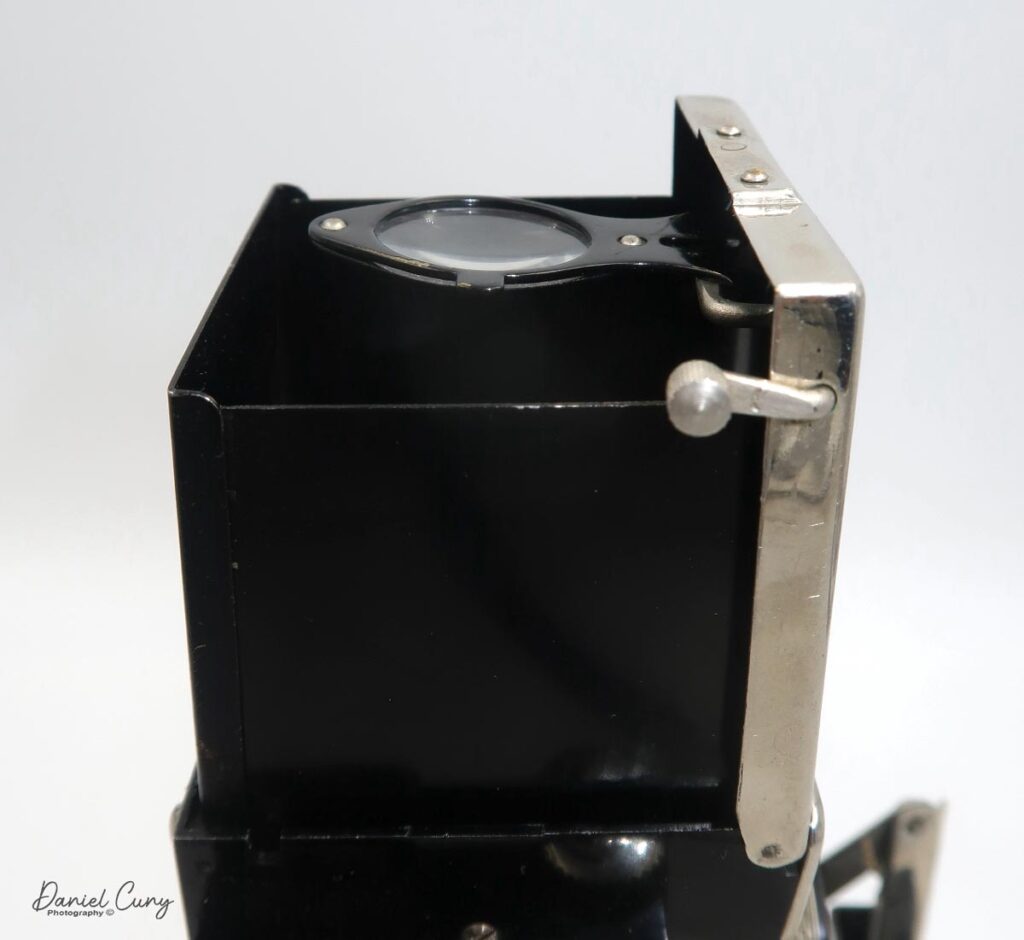
There is a latch at the top of the back door, which you slide up to open the film door to load and unload film. In my camera, there is a roll film holder you put the roll of film into before putting it into the camera. The film holder is something I’ve never seen before, and on the first roll, I needed to figure out which way the film rolled across the shutter, but it was easy to figure out. Now that I’ve done it, it makes sense, and I won’t have difficulty in the future.
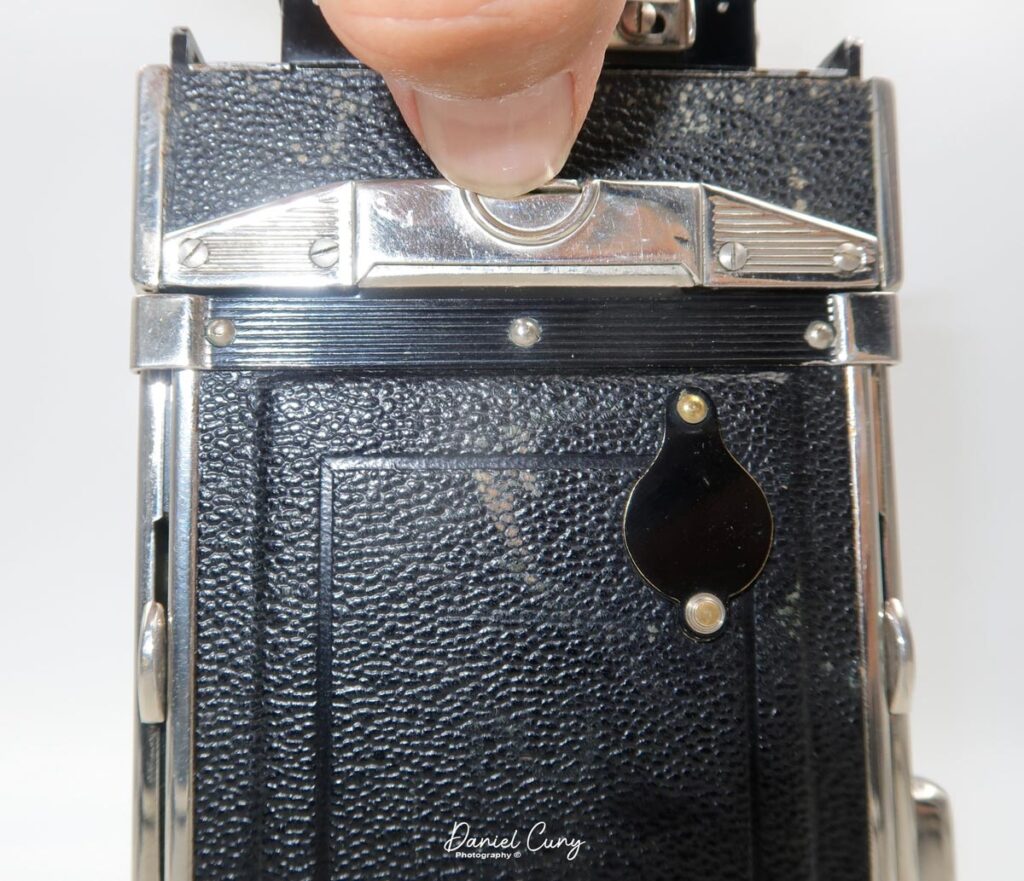
The frame counter resets to number 1 when I close the back of my camera, or at least it was there when I put film in it. There is a button on top of the frame counter. When I slide that button over, the frame counter goes to number 5, so my guess is that isn’t correct. I can’t find an instruction manual for this camera online, so I’m not 100% sure of the correct way to get maximum frames from the camera.
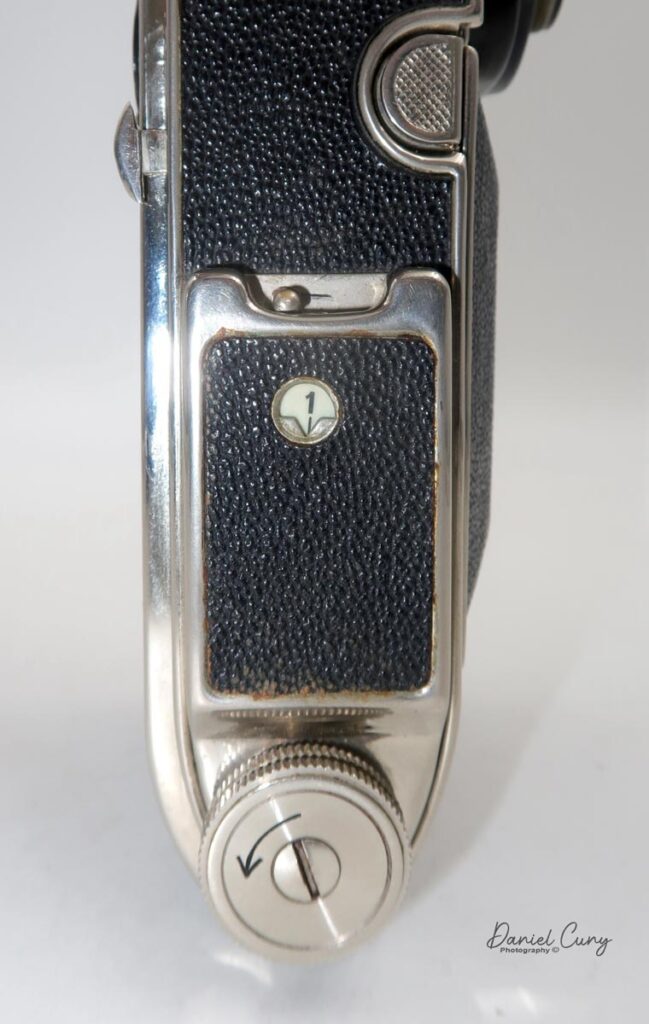
There is a red window on the back, which I’ll use in the future, as I did miss a few frames at the beginning of the roll when I shot with it. The film advance is on the bottom of the camera and is directly tied into the frame counter, whether you have film in it or not. The frame spacing on my camera was good once I got to the first frame and used the frame counter to find the next frame.
To focus the lens, as you hold the camera to take photos, there is a wheel next to the viewing lens. I rolled my finger across it one way or the other to achieve proper focus, which was the easiest and made the most sense to me.
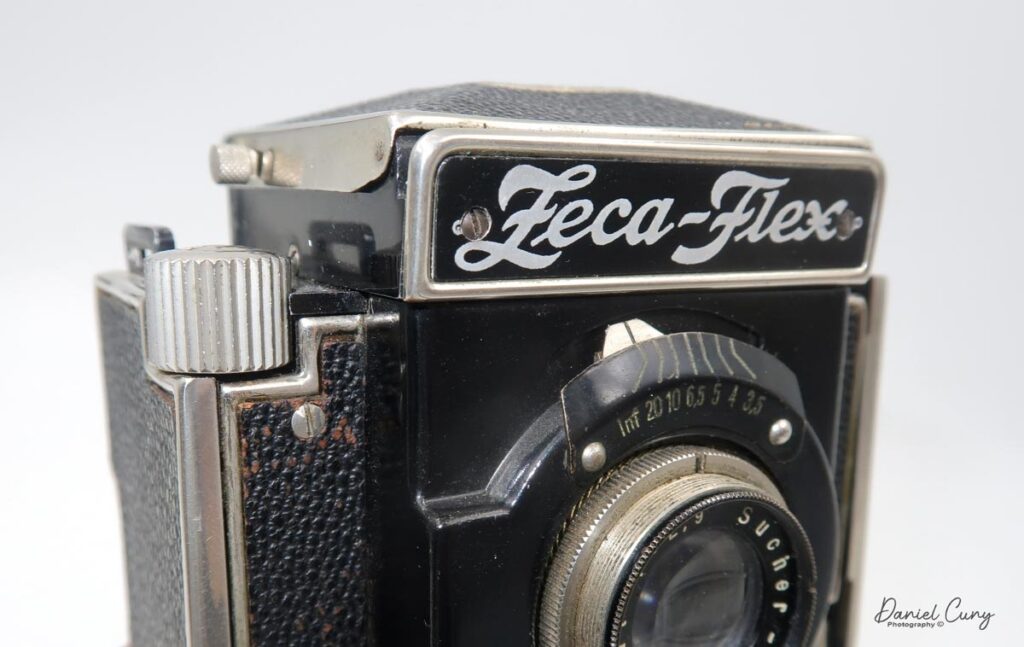
Results
Now that I had a roll of film in the camera, I took it out and walked around the neighborhood to get some photos. Here are some pictures I took on my walk with the stunning Zeca-Flex camera.

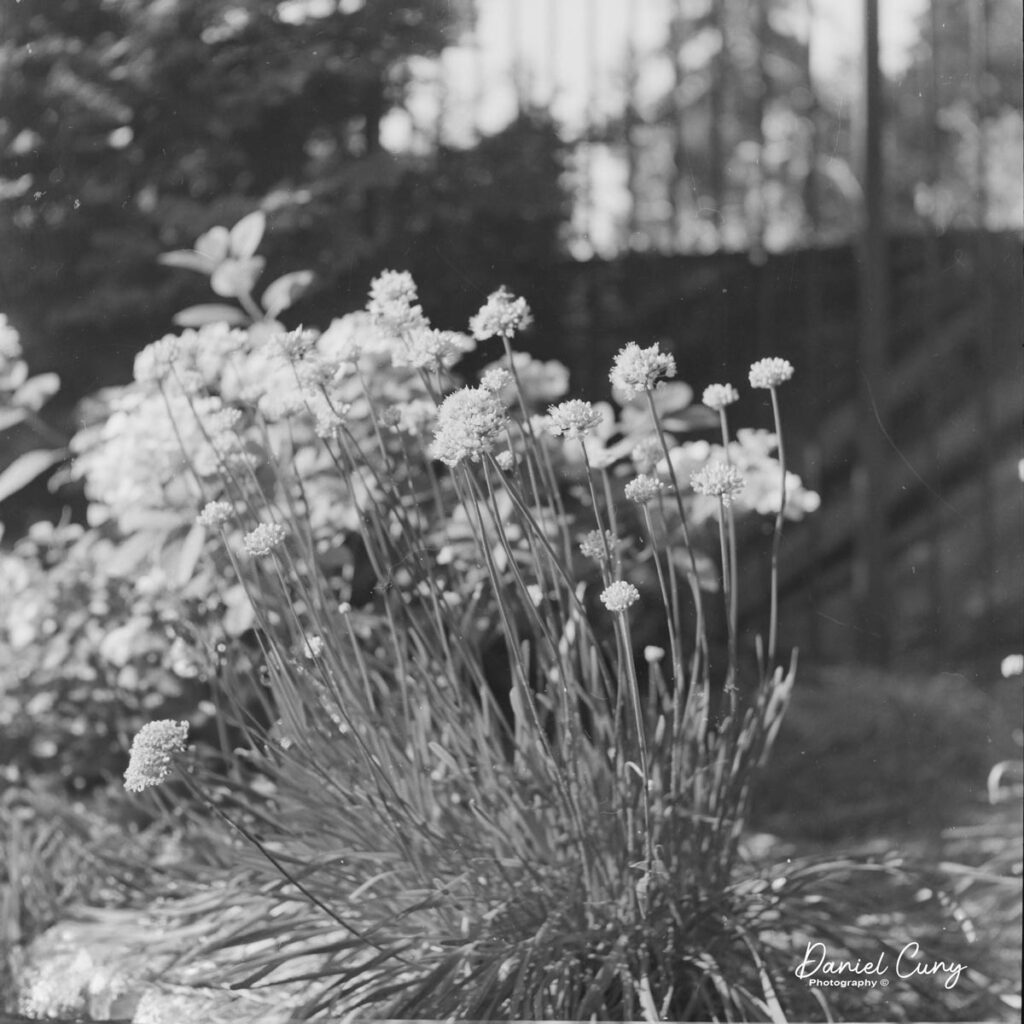
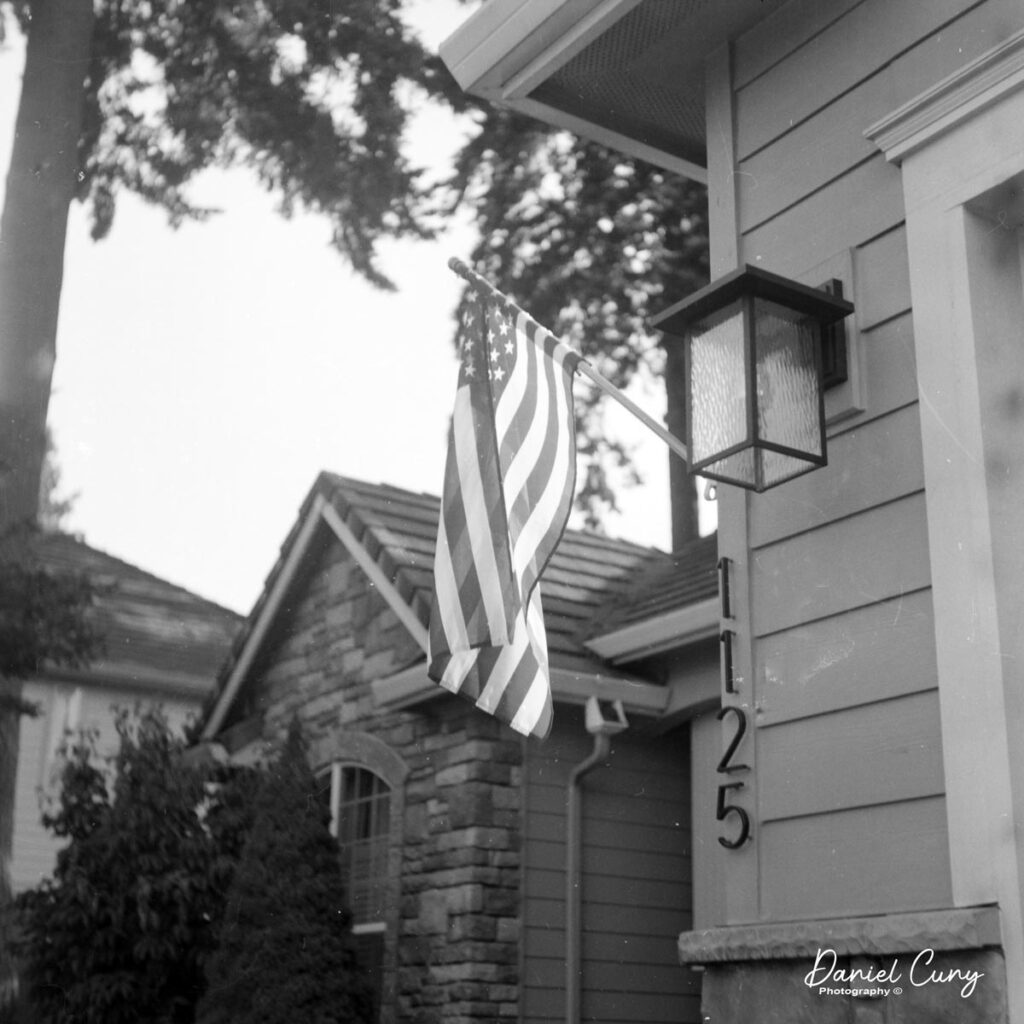
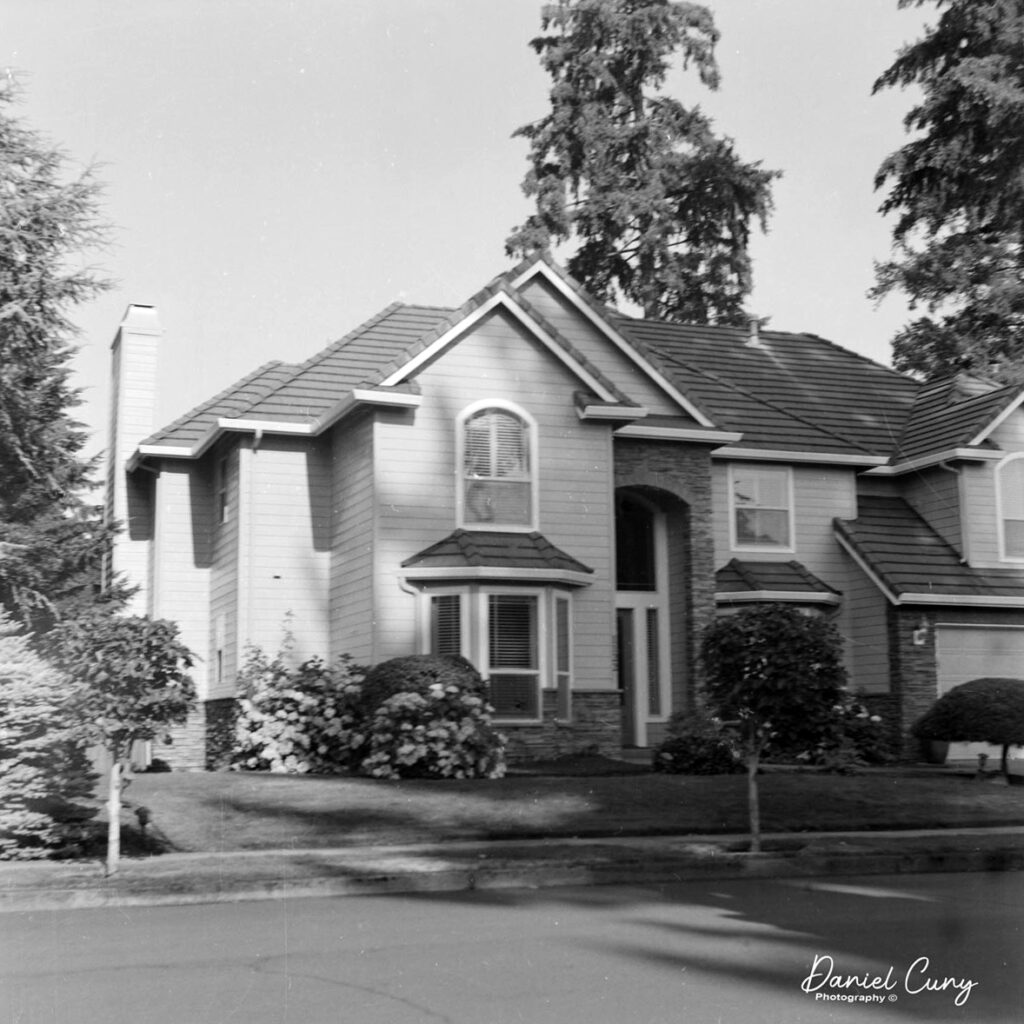
Conclusion
The Zeca-Flex viewfinder wasn’t the brightest, and achieving good focus was difficult even with the magnifying glass up. Another negative about using the camera is where the shutter release is placed. There is no shutter release button, so you need to cock the shutter and then release it with the shutter release button, which is in an awkward place and thought my finger would be in the photo, but it wasn’t.
Other than these two items, the Zeca-Flex was a joy to shoot with, and I feel lucky that my camera is in such good condition. I will use it again, but for now, I’m putting it back on the shelf and trying something different.
Thank you for taking a few minutes to read my review, you can find more on my website here. Please be safe, and I hope to hear from you soon.
Share this post:
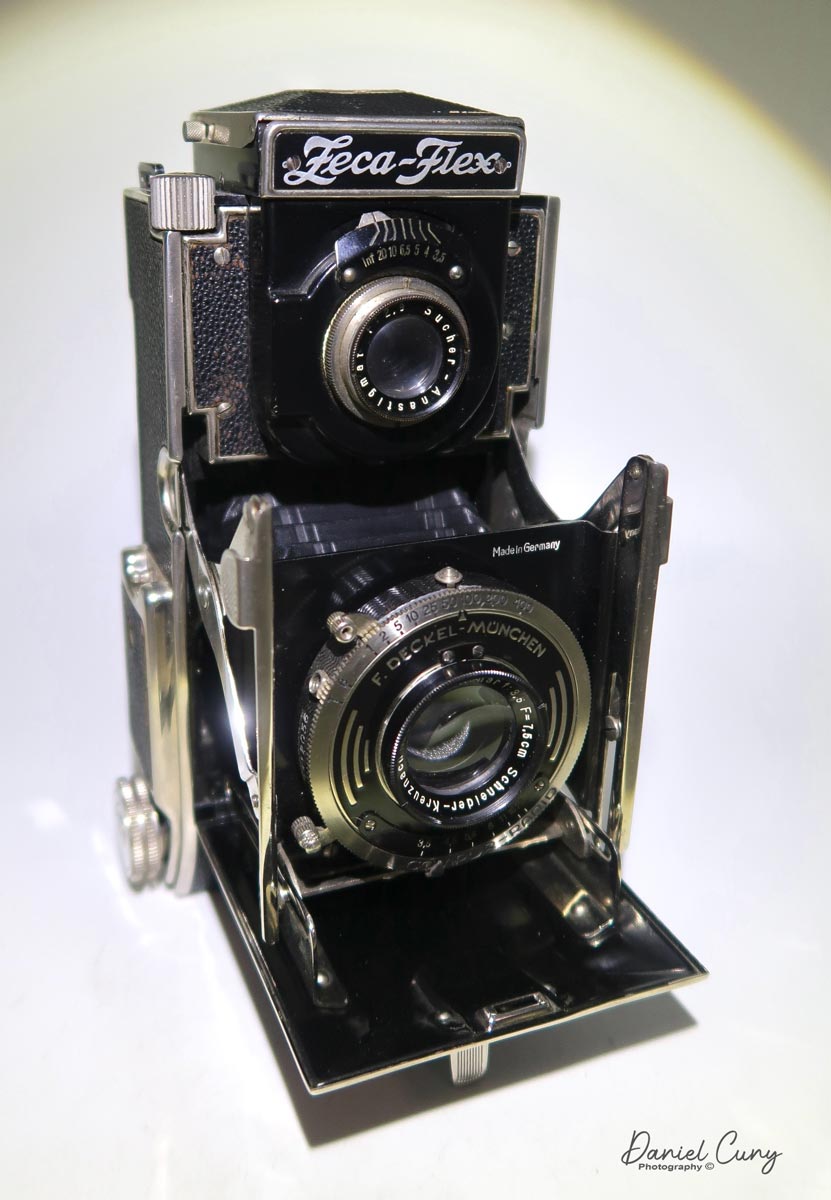
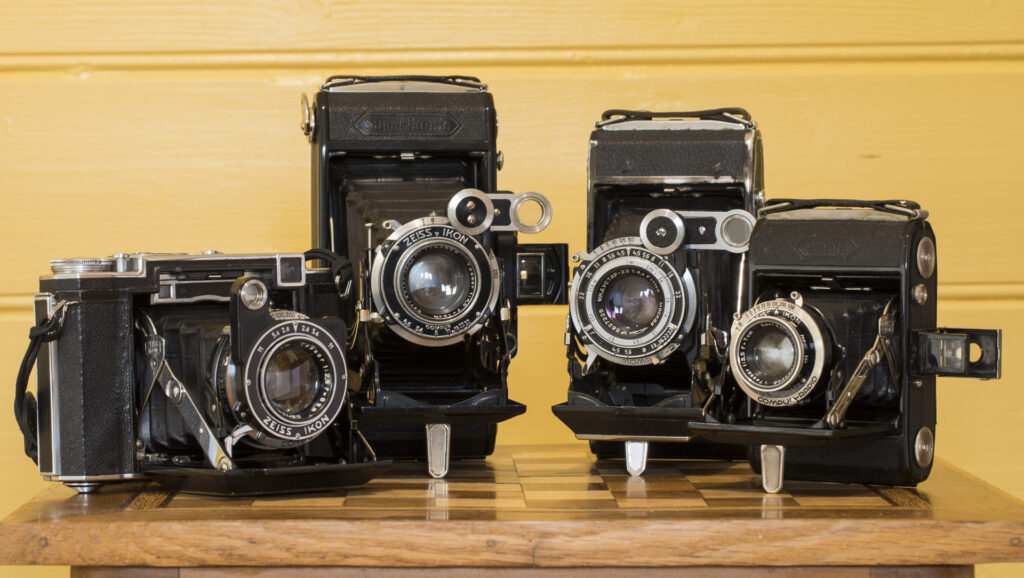
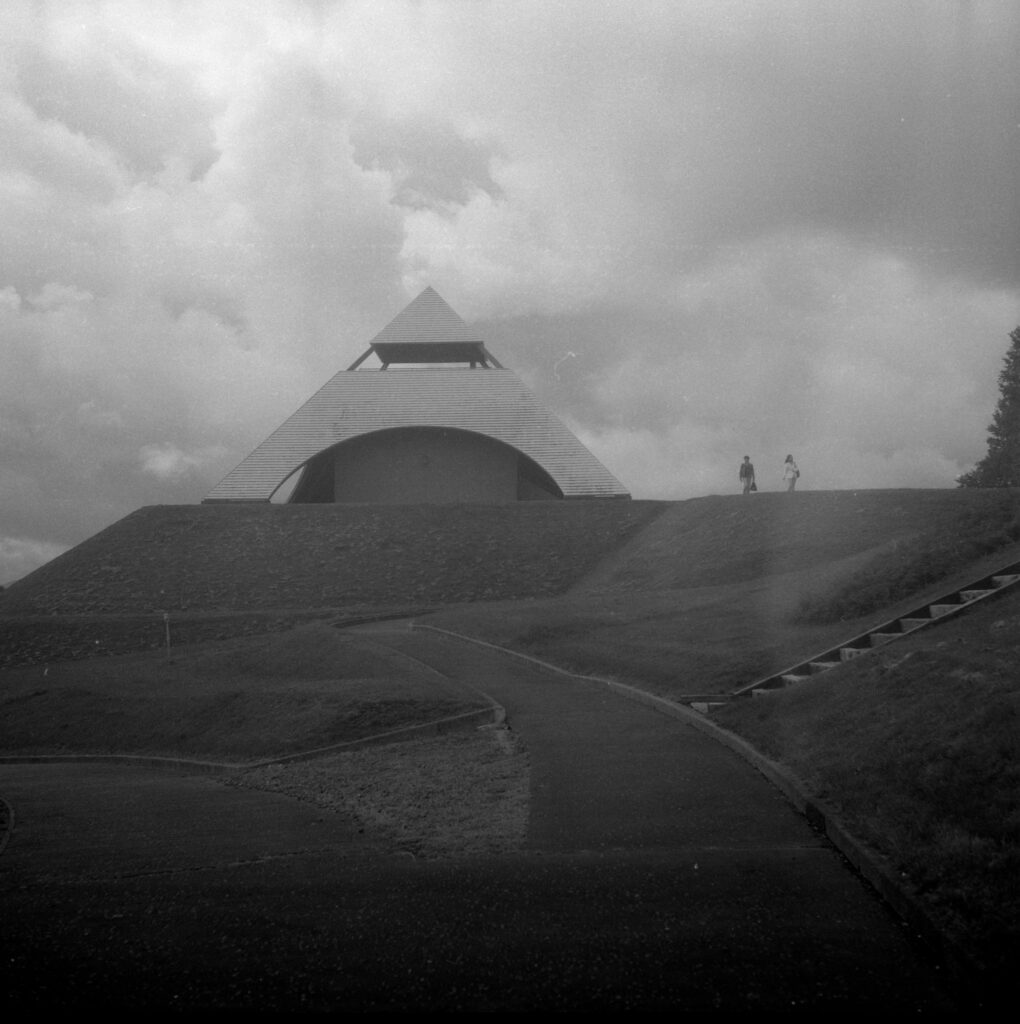
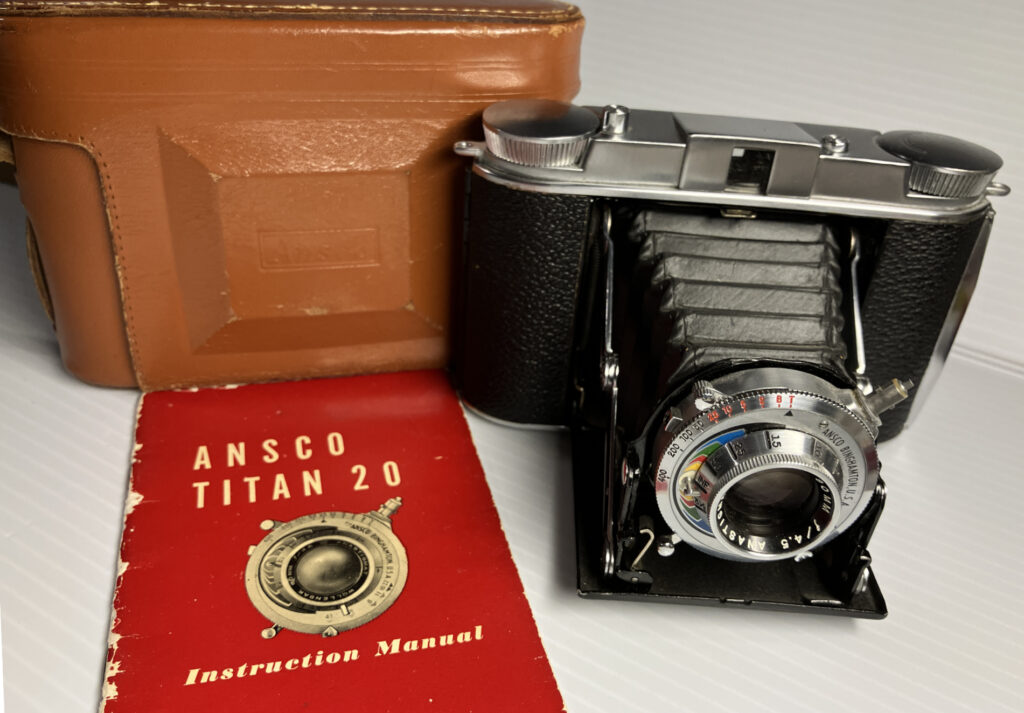
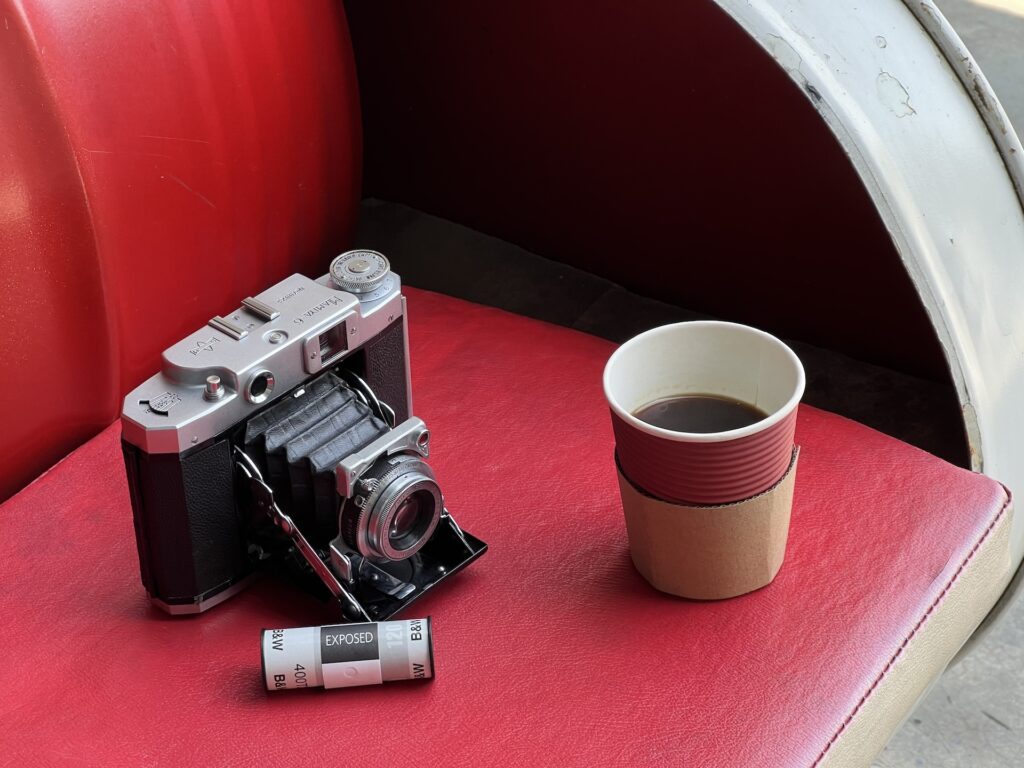




Comments
Tim Piscitelli on Zeh Zeca-Flex Camera Review
Comment posted: 23/05/2025
Comment posted: 23/05/2025
Stewart Waller on Zeh Zeca-Flex Camera Review
Comment posted: 23/05/2025
Comment posted: 23/05/2025
Geoff Chaplin on Zeh Zeca-Flex Camera Review
Comment posted: 23/05/2025
Comment posted: 23/05/2025
Comment posted: 23/05/2025
Emmanuel Brown on Zeh Zeca-Flex Camera Review
Comment posted: 23/05/2025
Comment posted: 23/05/2025
Emmanuel Brown on Zeh Zeca-Flex Camera Review
Comment posted: 23/05/2025
Jeffery Luhn on Zeh Zeca-Flex Camera Review
Comment posted: 23/05/2025
That is a very curious looking camera! Does it draw a lot of attention? It looks like the offspring from a Zeiss Ikon and a Rolleiflex! Hmmm. Neanderthal and Homo Habilis? I keep all my old cameras in the same cabinet. Should I put them in sandwich bags to prevent out-of-wedlock births???
Honestly, that camera is a great find. A working collector piece like that is rare. Thanks for the well written history. I read it twice.
Jeffery Luhn
Comment posted: 23/05/2025
Gary Smith on Zeh Zeca-Flex Camera Review
Comment posted: 23/05/2025
The example shots you've included look great Dan however the shots of your baby are excellent!
Comment posted: 23/05/2025
Alex Gridenko on Zeh Zeca-Flex Camera Review
Comment posted: 23/05/2025
Comment posted: 23/05/2025